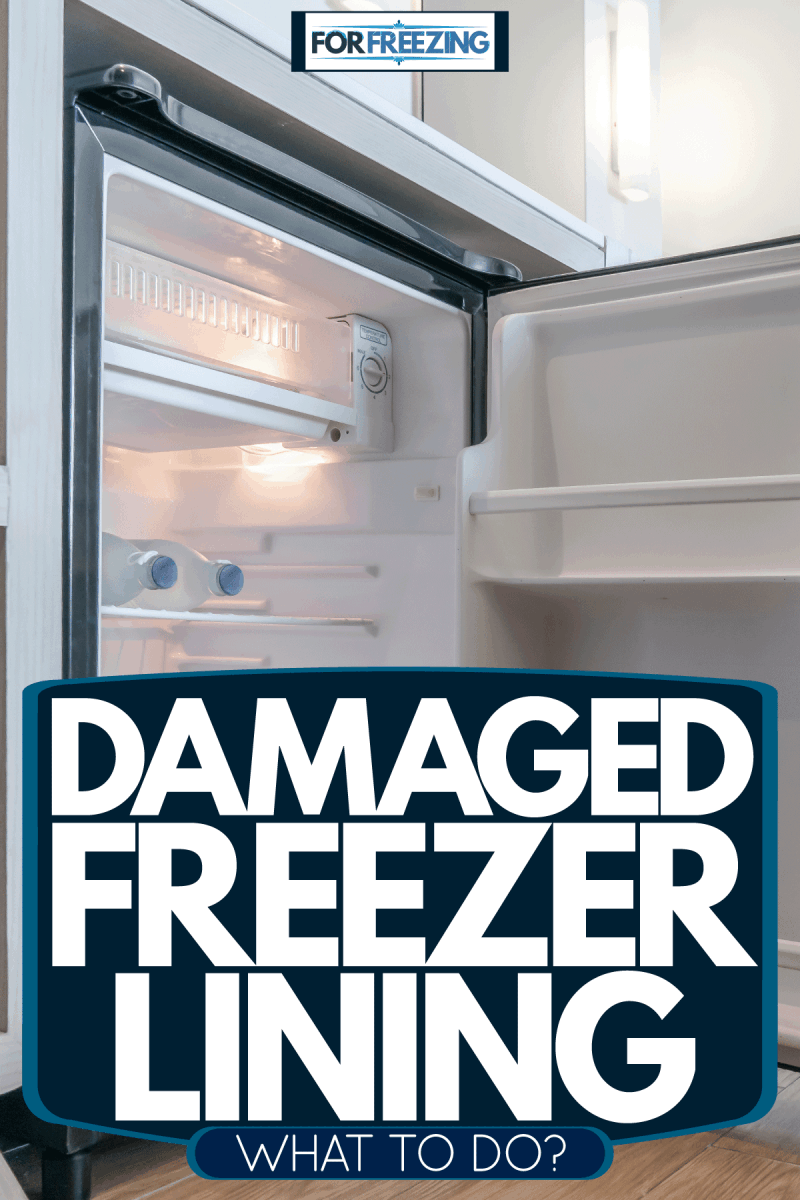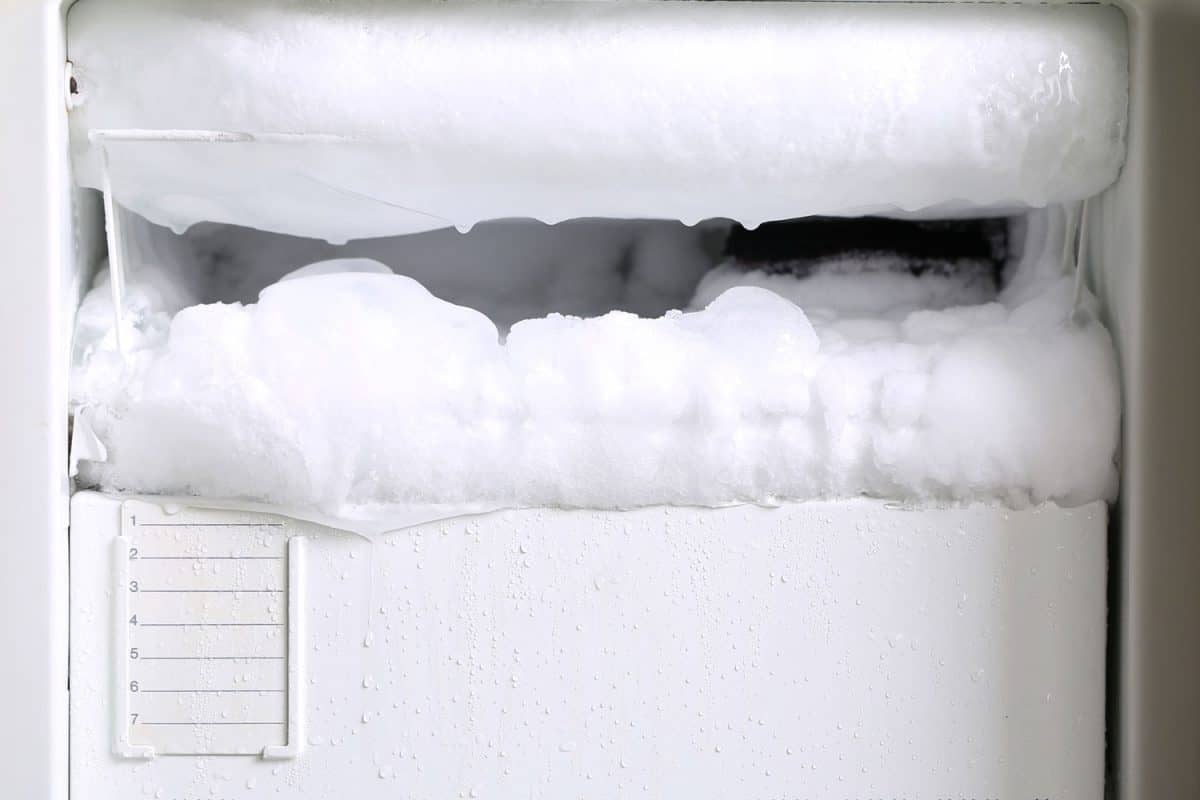How Do I Repair The Plastic Liner In A Refrigerator
Freezer linings generally have plastic constructions and are near the interior sides of freezer doors. Misuse, overstocking, and general wear and tear can damage the lining, leading to the freezer's shortened lifespan and other problems. But what to do with a damaged freezer lining? How will you know if this component has damage? We asked the experts and here's what we found.
Determine the cause and extent of the damage before attempting repairs on the damaged freezer lining. Below are some of the ways to troubleshoot this issue:
- Check if the door has a proper seal.
- Remove debris that might be stuck in the lining.
- Take note of visible damages, such as bent or warped corners.
Continue reading to learn the details behind these methods. Also, we're going to discuss the methods you can use to fix the damaged lining. We'll also tackle other relevant pieces of information, such as how to fix specific issues in your freezer.

How to Troubleshoot a Damaged Freezer Lining
The first part of relatively any repair job is to find the cause of the problem. That way, you can perform a long-term or permanent fix rather than a temporary repair.
Check the Seal
Start by checking the seal on the door. The freezer lining should be flush against the door when closed. However, damages to the lining can disrupt the closure. A faulty seal will prevent the freezer from closing properly, increasing the risks of spoilage. Additionally, an improper seal can increase the freezer's energy output, increasing electricity costs.
Put your hand near the freezer's door. If you feel a draft, the appliance is likely to have a damaged lining. Another way to find out if there's something amiss with your freezer lining is if your monthly energy costs suddenly rose.
Remove Stuck Debris
Foodstuffs and other small items can get into cracks in the lining. Leaving these objects in their current locations will make the crack larger over time. Remove stuck debris in the cracks of your freezer lining before proceeding with the appropriate repair methods.
Take Note of Visible Damages
Some issues that lead to damaged freezer linings might be tough to find with the naked eye. However, some problems are reasonably easy to spot. These concerns include bent or warped linings. Take note that you should think about checking for these signs of damage at least once every year. Linings that aren't in their original shape and structure can lead to more serious concerns.
How Do I Fix My Freezer Liner?
Use the appropriate repair method after figuring out the source of the problem that brought about the damaged freezer lining. Here are two ways on how you can fix certain issues on the appliance's liner:
General Plastic Liner Repairs
It's possible to repair many relatively small issues with damaged freezer liners. However, you need to act fast as the problems can increase if you put off the repair jobs for later. Start the general repairs on your freezer lining by gathering the following items:
- Sandpaper or sanding block (100-grit)
- Refrigerator liner repair kit
- Pair of scissors
- Latex gloves
- Clean cloth or rag
After gathering the tools, follow these steps to repair your damaged freezer lining:
- Turn the freezer off and remove all the items, such as shelves and food from the appliance.
- Prepare the damaged area on the liner with the 100-grit sandpaper or sanding block.
- With your latex gloves on, use the silicone in the repair kit on the offending area.
- Cut the fiberglass cloth from the repair kit to about 3/4 of the crack or hole's size and put it on top of the damaged location. Stretch the fabric so that the remaining 1/4 area will have a snug fit on the area.
- Apply a fairly thin layer of sealant on the fiberglass strip. Then, apply a bit of pressure to it for the adhesive to bond properly and to remove wrinkles that may form.
- Apply another layer of sealant before returning the shelves and food items to the freezer.

Look at this Yikai fiberglass cloth tape on Amazon.
Fix a Freezer Liner Crack
First, gather the necessary tools for this job. You'll need:
- Liner repair tape
- Food-grade silicone sealant
- Paper towels
- Rubbing alcohol
- Sandpaper or sanding machine
- Drill
- 1/16-inch drill bit
- Blankets
- Reasonably large containers (e.g., laundry baskets)
Additionally, you may need to use a lamp or light source, particularly if you need to cut the power in the room to troubleshoot and repair the freezer lining. Next, follow these steps to repair the crack:
- Unplug the appliance or turn off the power in the room, whichever is the best option for your current scenario.
- Remove the contents and put them in baskets or other large containers. Cover the food you took out of the freezer with a blanket to prevent spoilage.
- Wait a few minutes to allow the freezer to return to room temperature.
- Use your drill equipped with the 1/16-inch drill bit to drill two small holes on both ends of the crack. Drilling while the appliance is still cold can increase the crack's size.
- Use the sandpaper or sanding machine to scruff the crack's edges and its surroundings.
- Once smoothened, wipe the sanded area with a paper towel dipped or sprayed in rubbing alcohol.
- Squirt a reasonably generous amount of food-grade silicone along the crack. Don't forget to fill the drilled holes as well.
- Smooth the silicone with your thumb. You can also use gloves if you don't want to make your hands messy.
- Spread and extend a piece of liner repair tape on the silicone.
- Restore power and return the items into the freezer.

Check out this Silco RTV food contact safe silicone sealant on Amazon.
How Do I Know If Freon is Leaking from My Freezer?
Freons are colorless, odorless, and non-flammable gases or liquids used to keep freezers, air conditioners, and other certain appliances cool. A freezer that's lacking freon output feels warm inside.
Also, the appliance won't produce sufficient cooling, increasing the risks of spoilage. The US FDA suggests not to leave food that needs cold temperatures in an inadequate environment for more than 4 hours or they'll become spoiled. Spoiled food because the freezer didn't provide sufficiently cold temperatures can also produce foul smells.
Additionally, freezers that leak freon will make their compressors and condensers work more than usual. Therefore, you'll experience higher than average electricity bills. You can use a leak detector if you're unsure if your freezer is leaking freon.

Check this Elitech WJL-6000S freon leak detector on Amazon.
How Do I Fix a Hole in My Chest Freezer?
The process for repairing a hole in a chest freezer will depend on if the location of the offending area is in or outside the appliance. For external holes, you can use the items and steps mentioned in the previous section to make general repairs. On the other hand, here are the steps to repair a hole in a chest freezer.
- Cut the power running to the chest freezer.
- Open the freezer door. Leave an item, such as a stick or piece of cardboard in the gap if the appliance's door shuts automatically.
- Locate the hole and cut a piece of waterproof marine filler that's about 1/4-inch the size of the issue.
- Mix a 2-step adhesive and put it in the hole.
- Press the adhesive for about 5 minutes using a tough object like so that the product adheres to the hole.
- Let it dry for 24 hours before turning on the freezer.
What Glue Can be Used in a Freezer?
Many freezer lining repair jobs require glue. With that in mind, don't use just any glue that you can find on the market. Make sure that the adhesive is food-friendly and resistant to extreme temperatures. Additionally, glue with a fast adhesion rate is advisable for quick repair jobs.
Is a Crack in a Freezer Dangerous?

Freezer cracks can invite serious problems, such as food spoilage and increased energy bills. Furthermore, ice can build up in the freezer rapidly, which can invite excess condensation. Significant condensation can then lead to extra moisture, which can promote mold growth.
Final Words
Troubleshoot for cracks, holes, and other issues on your freezer lining to see the sources and extent of the damages. Then, gather the necessary tools, such as silicone sealants and food-friendly adhesives to make appropriate repairs. Follow these steps, and your freezer should be working efficiently with proper lining.
How Do I Repair The Plastic Liner In A Refrigerator
Source: https://forfreezing.com/damaged-freezer-lining/
Posted by: stoltejoyagoint.blogspot.com

0 Response to "How Do I Repair The Plastic Liner In A Refrigerator"
Post a Comment